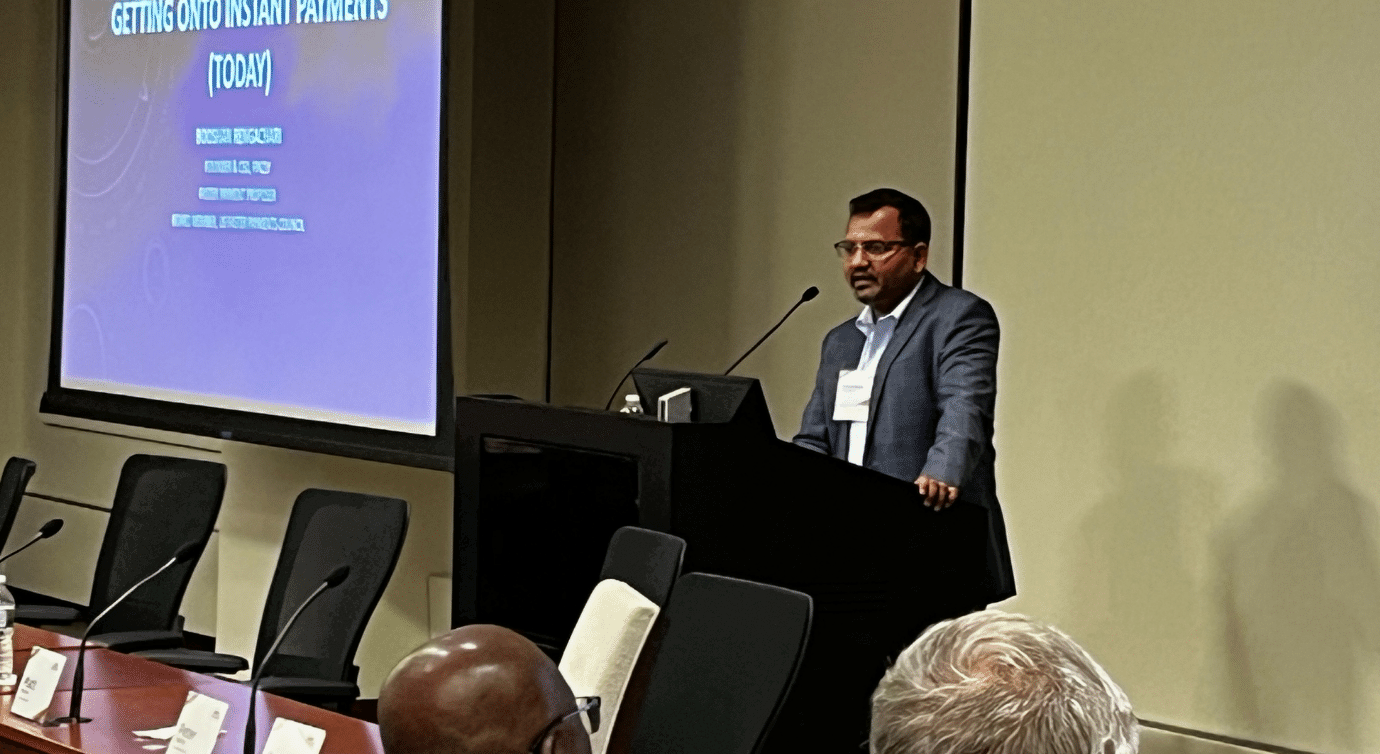
When Banks Merge, Payments Get Messy. Here’s How to Keep Them Moving.

During the Chicago Payments Symposium on October 4th, 2023, Booshan Rengachari, Founder and CEO of Finzly, delivered a compelling presentation on why banks should be thinking about innovation as they get ready for FedNow. Here is a rundown of the valuable insights he shared.
While we all like to learn from the past, the repetition of past mistakes is a common feature in bank transformation. In the past and even today, several banks persist in offering payment rails, regrettably, not payment experiences to their customers.
Let's draw inspiration from the past. Even the former Microsoft CEO, Steve Ballmer, once discouraged the launch of the iPhone, underestimating its design prowess. Had they followed his advice, we might have ended up with a phone sporting everything from a port for your television to a jack for your guitar - a far cry from what customers desire.
Banks need to disrupt. Disruption means value-addition - at least a 10x value to customers.
True disruption implies providing substantial value, at least tenfold, to customers. Unfortunately, many banks resemble technology museums, and their payments infrastructure stands out as one of the weakest links. Middleware supplies fragmented APIs for each rail, creating a multitude of integration points. Is this the path to delivering that coveted tenfold value to our customers?
Consider this: Singaporean banks offer a three-click payment experience, a stark contrast to the cumbersome many-stepped processes at several American banks.
The question we face is how to bring that streamlined three-click payment experience to all banks.
The solution lies in rethinking payments with a central payment core capable of processing all payments, providing a robust infrastructure for banks, and delivering an improved customer experience.
Now, the future of payments? It's all about being embedded, connected, and real-time, moving towards making payments virtually invisible. We're witnessing trends such as smarter and quicker insurance claims and intelligent prompts for choices to facilitate easier payments.
Modern cloud-based infrastructure empowers banks to launch a unified central payment core in less than seven minutes - all thanks to the cloud.
It's high time we reset and rejuvenate our approach to payment modernization. Let's move towards smarter integrations, not in years, but in months. Centralized payment cores, being core-agnostic, added with the ability to seamlessly plug and play with other satellite systems bring remarkable operational efficiency to financial institutions. Banks can consolidate their multiple payment teams into one, providing centralized oversight and a single API to realize the "embedded, connected, and real-time" target state.
To meet the diverse banking needs of parents, students, senior citizens, and various business verticals, while simultaneously simplifying the user experience, banks must rethink their approach to customer experience, making it more intuitive. Payment experiences are shifting towards automation and invisibility, driven by initiatives like FedNow and directory services. Whether you're grabbing a burger, parking your car, or hopping in a taxi, payments are becoming part of the background.
Banks should think about providing SuperApps that enhance customer convenience across various aspects of their lives.
We're witnessing a growing demand and interest in embedding instant payment experiences, ranging from investment firms to homeowners' associations. The question that looms is whether banks are prepared with the FedNow connective tissue through APIs to take advantage of the opportunities in embedded finance?
In the end, it's all up to the banks. Are they going to stick with the old-school Blackberry or level up and give us an iPhone-like experience? The banking world is at a turning point, and change isn't just an option - it's a must.
